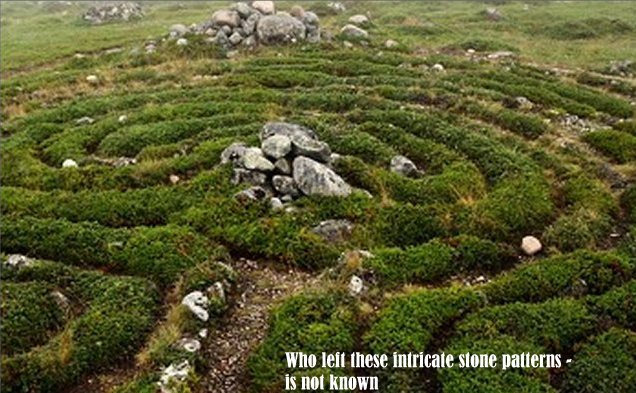Secrets Of Bolshoi Zayatsky Island – Mysterious Stone Labyrinths Of Unknown Purpose And Origin
A. Sutherland - AncientPages.com - One of the most isolated and mystical places of the northern region, is the Solovetsky Archipelago that comprises six islands in the western part of the White Sea, of Russia's Far North. Traces of a human presence from as far back as the 5000 B.C. can be found on these islands covering 300 square kilometers, but about the oldest inhabitants of the islands, very little is known.
Particularly interesting is the Bolshoi Zayatsky (Big Zayatsky) Island dated to the 3rd millennium BC and once occupied by prehistoric residents who built sacred sites, villages, and irrigation systems. However, not much is known about their life, beliefs, and religious rituals.
Today the site is sparsely populated and people live a simple life, but the Bolshoi Zayatsky - with a large number of ancient stone mazes - has been attracting scientists and enthusiasts for many years with its mysteries.
The Bolshoi Zayatsky island makes it stand out among the many similar empty northern islands.
It is believed that the mysterious people of Bolshoi Zayatsky, left a group of 13 – 14 stone labyrinths on 0.4 km 2 area of one small island, as many as 850 heaps of boulders containing bones, a great variety of petroglyphs, and many places of worship.
Anzer Island, for example, which is also a part of the Solovetsky Archipelago, has only four labyrinths and 38 cairns, disposed in three irregular rows along the seashore.
Totally, on the Solovetsky Islands, there have been preserved more than 30 stone labyrinths.
For some reason, the intricate patterns of stones, scattered around the Big Zayatsky island appeared in the distant past.
Several theories have been proposed to explain the labyrinths' true purpose.
According to one theory, supported by the argument that almost all the mazes are located on the coast, their creators were the northern seafarers exploring the cold realm of waters today known as White Sea.
Another suggestion is that they may have represented a border between this world and the underworld.
Could the formations be related to the spiritual beliefs of the ancient inhabitants of Bolshoi Zayatsky and even another small island of the archipelago?
Professor Alexander Kuratov, one of the researchers who investigated the formations, says that
"... labyrinths on the Solovetsky Islands are the spiral-shaped figures, it is a system of tangled passages, walls of which are laid out with boulders. Near 30 labyrinths of different size and form were discovered on the Solovetsky Islands during the last 100 years of research.
Spiral that twists from left to right or from right to left is a foundation of most labyrinths. The “Horse Shoe” shape of the labyrinths depends on how many twists spiral has and on principal of the way it untwists with further transformation of its constitution. The amount of “horse shoes” formed by spiral and additional elements of construction provide different degrees figure complexity.
Labyrinths are not very tall – about 40 centimeters high, they are often located on the ground right by the sea and covered with lichen, moss, heather, and small bushes. Labyrinths have no distinct orientation, their exits-entrances are pointed to south-east, south, south-west and west, most of the times to the sea.
Labyrinths could be used not only as burial grounds for the tribes that lived along the White Sea, but for the tribal rituals as well..." (A. Martynov, “Ancient trails of Solovetsky Islands”)
All the labyrinths on Bolshoi Zayatsky were built with boulders gathered locally, and are concentrated on the western side of the island, while its eastern part is covered by a large collection of stone formations, of which many depict the sun with radial spokes.
The age of labyrinths is estimated to approximately 3000 BC but they can be much older.
Both very large and small designs of boulders vary in size and pattern, but most of them represent a single or double helix maze that has only one entrance, which is at the same time exit point. The smallest labyrinth measures around six meters in diameter with the largest being 25.4 meters in diameter.
The rows of boulders form spirals, with some consisting of two spirals, described as resembling two serpents with their heads in the center. The entrances to the labyrinths are mostly on the south and while there are five different settings, they each have only one entrance/exit point.
There may be many different theories and speculations but still, how, when, and for what purpose the island's stone formations were created - are questions that remain unanswered by researchers.
The Bolshoi Zayatsky's labyrinths - continue to remain a mystery.
Written by – A. Sutherland AncientPages.com Staff Writer
Copyright © AncientPages.com All rights reserved. This material may not be published, broadcast, rewritten or redistributed in whole or part without the express written permission of AncientPages.com
UNESCO
https://whc.unesco.org/en/list/632/
Wikipedia
More From Ancient Pages
-
 Most Important Road In Scottish History Found In The Garden Of The Old Inn Cottage Near Stirling
Archaeology | Nov 16, 2023
Most Important Road In Scottish History Found In The Garden Of The Old Inn Cottage Near Stirling
Archaeology | Nov 16, 2023 -
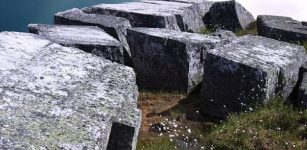 Mysterious Megaliths Of Russia May Offer Evidence Of An Ancient Advanced Lost Civilization
Ancient Technology | Jul 22, 2017
Mysterious Megaliths Of Russia May Offer Evidence Of An Ancient Advanced Lost Civilization
Ancient Technology | Jul 22, 2017 -
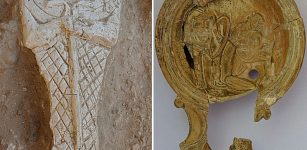 Hellenistic Decorated Tombs And Tombstone Probably Used As A False Door Unearthed In Egypt
Archaeology | Jan 10, 2018
Hellenistic Decorated Tombs And Tombstone Probably Used As A False Door Unearthed In Egypt
Archaeology | Jan 10, 2018 -
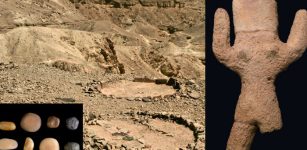 Ancient Artifacts Used In Magical Rituals To Ward Off The Evil Eye Found Next To The Pilgrimage Road
Archaeology | Sep 11, 2023
Ancient Artifacts Used In Magical Rituals To Ward Off The Evil Eye Found Next To The Pilgrimage Road
Archaeology | Sep 11, 2023 -
 Ancient High-Technology: Automatons In Greek Mythology
Ancient Technology | Feb 22, 2015
Ancient High-Technology: Automatons In Greek Mythology
Ancient Technology | Feb 22, 2015 -
 Ancient Seal Offers First Biblical Evidence Of The Prophet Isaiah?
Archaeology | Feb 27, 2018
Ancient Seal Offers First Biblical Evidence Of The Prophet Isaiah?
Archaeology | Feb 27, 2018 -
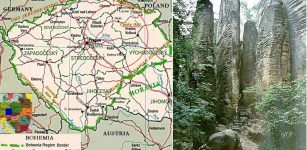 Bizarre Sandstone Towers Of The Rocky Town And Legend Of Jan Svatos Who Mastered Magic
Featured Stories | Sep 8, 2018
Bizarre Sandstone Towers Of The Rocky Town And Legend Of Jan Svatos Who Mastered Magic
Featured Stories | Sep 8, 2018 -
 Top 10 Discoveries About Our Ancient Ancestors In 2023
Archaeology | Dec 29, 2023
Top 10 Discoveries About Our Ancient Ancestors In 2023
Archaeology | Dec 29, 2023 -
 On This Day In History: National Hero Paul Revere Warns Of The British Coming – On Apr 18, 1775
News | Apr 18, 2016
On This Day In History: National Hero Paul Revere Warns Of The British Coming – On Apr 18, 1775
News | Apr 18, 2016 -
 Where Is One Of Colorado’s Most Mysterious Long-Lost Artifacts? Have New Clues Emerged?
Featured Stories | Aug 20, 2024
Where Is One Of Colorado’s Most Mysterious Long-Lost Artifacts? Have New Clues Emerged?
Featured Stories | Aug 20, 2024 -
 Evidence Scots And Irish Settled Iceland A Century Before The Vikings?
Featured Stories | Jan 7, 2023
Evidence Scots And Irish Settled Iceland A Century Before The Vikings?
Featured Stories | Jan 7, 2023 -
 They Spoke The Language Of The Gods – Keepers Of Sacred Ancient Knowledge – Part 1
Ancient Mysteries | May 22, 2018
They Spoke The Language Of The Gods – Keepers Of Sacred Ancient Knowledge – Part 1
Ancient Mysteries | May 22, 2018 -
 Mysterious 210,000-Year-Old Apidima Skull Could Re-Write Human History
Archaeology | Jul 11, 2019
Mysterious 210,000-Year-Old Apidima Skull Could Re-Write Human History
Archaeology | Jul 11, 2019 -
 Jars With 2,600-Year-Old Vanilla Remnants Discovered In The City Of David
Archaeology | Mar 31, 2022
Jars With 2,600-Year-Old Vanilla Remnants Discovered In The City Of David
Archaeology | Mar 31, 2022 -
 Magnificent 2,000-Year-Old Marble Head Of God Dionysus Discovered In Rome
Archaeology | Jun 17, 2019
Magnificent 2,000-Year-Old Marble Head Of God Dionysus Discovered In Rome
Archaeology | Jun 17, 2019 -
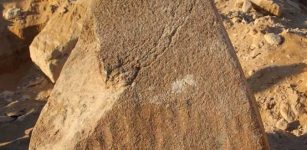 Mini-Pyramid Discovered In South Saqqara, Egypt
Archaeology | Oct 13, 2017
Mini-Pyramid Discovered In South Saqqara, Egypt
Archaeology | Oct 13, 2017 -
 Discovery Of 1500-Year-Old Celestial Observatory Dated To Sassanian Empire
Archaeology | Mar 16, 2017
Discovery Of 1500-Year-Old Celestial Observatory Dated To Sassanian Empire
Archaeology | Mar 16, 2017 -
 Steel Was Already Being Used In Europe 2,900 Years Ago – New Study
Archaeology | Mar 1, 2023
Steel Was Already Being Used In Europe 2,900 Years Ago – New Study
Archaeology | Mar 1, 2023 -
 Tuatha de Danann – ‘Gods’ Of Ireland And The Myth Of Danae And Zeus – Could The Early Irish Celts Have Ties To Ancient Greece?
Ancient Mysteries | Mar 28, 2017
Tuatha de Danann – ‘Gods’ Of Ireland And The Myth Of Danae And Zeus – Could The Early Irish Celts Have Ties To Ancient Greece?
Ancient Mysteries | Mar 28, 2017 -
 Catherine Of Alexandria Courageously Confronted 50 Pagan Philosophers And Was Sentenced To Death
Featured Stories | Oct 15, 2018
Catherine Of Alexandria Courageously Confronted 50 Pagan Philosophers And Was Sentenced To Death
Featured Stories | Oct 15, 2018





